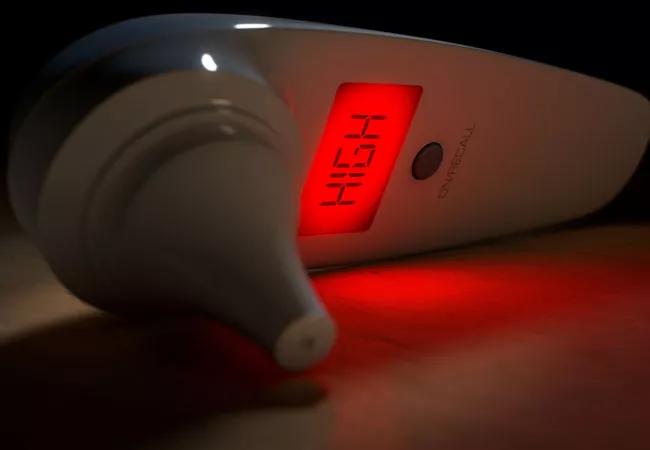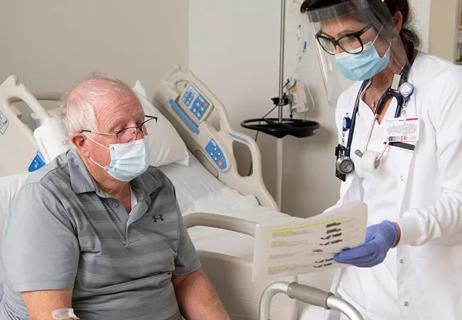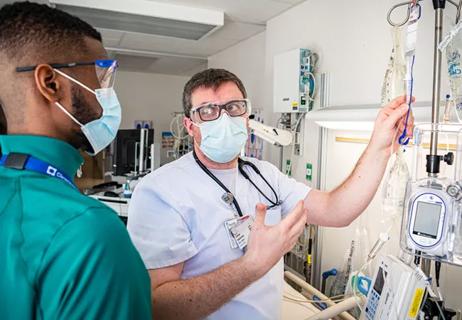Nurses prepare for a possible spike in flu activity

While most people who become infected with influenza viruses recover without any after effects, the flu can lead to serious illness and death. During 31 flu seasons from 1976-77 through 2006-07, flu-associated deaths ranged from approximately 3,300 to 49,000 annually, according to a report from the Centers for Disease Control and Prevention. This season, the CDC noted a steady increase in flu activity during November and early December. For the week ending Dec. 24, 2016, the proportion of people seeing a healthcare provider for influenza-like illness increased to 2.9 percent, above the national baseline of 2.2 percent.
Cleveland Clinic is a non-profit academic medical center. Advertising on our site helps support our mission. We do not endorse non-Cleveland Clinic products or services. Policy
Healthcare professionals throughout Cleveland Clinic prepare for flu season, which typically lasts from October through April, and offer top-notch care to those who become infected.
Even though flu season is well underway, it’s not too late for people to get vaccinated, says James Bryant, DNP, RN, CEN, CPEN, CCRN, NEA-BC, Associate Chief Nursing Officer of Emergency Services at Cleveland Clinic. “Nobody wants to be this sick, with aches, pains, fever and chills that can take a week or so to get over,” he says.
The CDC recommends that everyone six months or older receive a flu vaccine each year. In addition to the standard flu shot – the inactivated influenza vaccine or IIV – there are three other versions this season:
In addition, the CDC indicates that the nasal spray flu vaccine – the live attenuated influenza vaccine or LIAV – should not be used during 2016-17 because it may not offer the same level of protection as other vaccines.
In the past, Cleveland Clinic and other healthcare organizations would swab the noses of patients to test for flu and perform a quick screening. However, this type of testing also required additional lab testing for any negative samples, taking 24 to 48 hours for a final result. This season, nurses in Cleveland Clinic’s Emergency Department and other facilities rely on an automated, multiplex, real-time system for rapid in vitro qualitative detection and discrimination of Influenza A and B virus RNA in nasopharyngeal swab specimens. The test delivers a positive or negative result in 20 minutes with no need for additional testing.
Dr. Bryant says there are several advantages to using this real-time diagnosis system. “When we get a lot of patients, it’s sometimes hard to find enough private rooms or spaces for them,” he says. “If we know without a doubt that someone has the flu, we can send the patient home with proper instructions and antiviral medicine to minimize their symptoms.”
In addition, if patients need to be admitted, the hospital can cohort flu patients, placing them together in rooms or on units. Finally, a firm diagnosis helps clinicians rule out other flu-like illnesses. “It’s important that we know what patients have so we can treat them appropriately,” says Dr. Bryant.
Dr. Bryant offers several tips for clinical nurses and nurse leaders to help prevent the spread of influenza and reduce its effects:
This is the time of year that flu cases often rise: The weather in many places gets colder, and people who have gathered together for the holidays begin to hunker down at home. “It takes about 10 days or so for the flu to replicate, and then people really start getting sick,” says Dr. Bryant. “It’s best to be prepared!”

Phone triage system reduces call backs and delays in care

New protocol reduces costs, increases patient and caregiver satisfaction

New options benefit caregivers, nursing units and patients

Nurses facilitate preoperative program to educate and prepare patients for ongoing care

Introduces at-home work and new patient screening tool

Health disparities, mental health and more

Ideas for approaches to prevention, response and more

Educating and developing generations of nurses